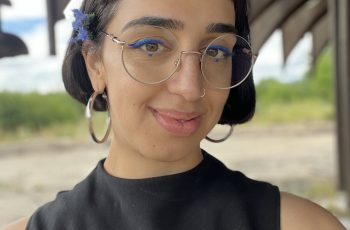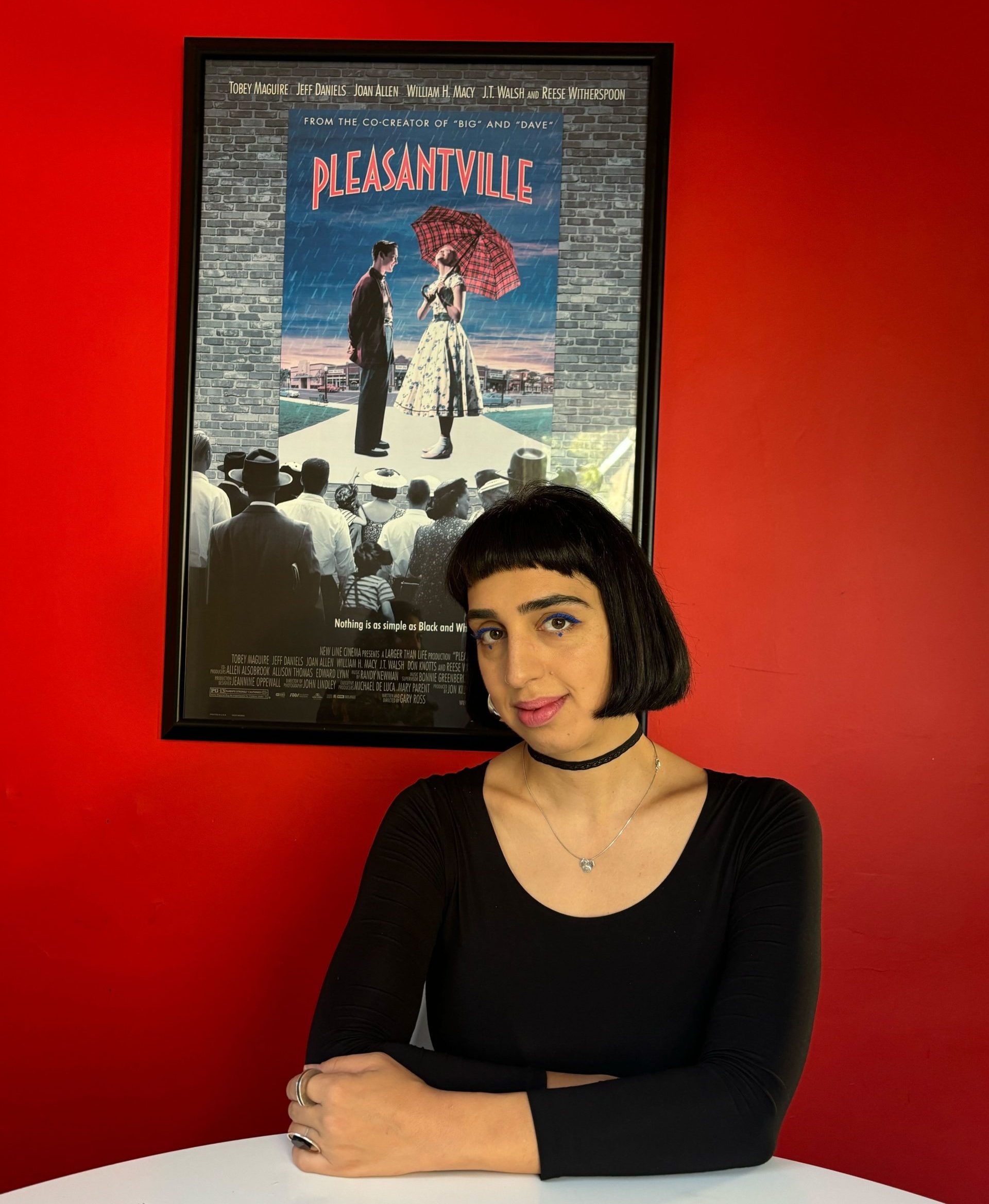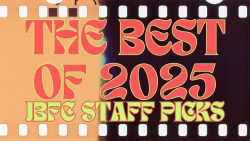Posted October 30, 2024
Artist-in-Residence: Anahit Ghazaryan
As part of our ongoing interviews with Artist-in-Residence at the Jacob Burns Film Center, we recently caught up with filmmaker Anahit Ghazaryan to discuss her current project. This residency, presented in collaboration with the Close Up Initiative, is a result of the 2024 Close-Up Pitching Forum in Tbilisi, Georgia, held earlier this year. JBFC Programming Coordinator Ian LoCascio traveled to Tbilisi to participate as an industry panelist and selected the JBFC Artist-in-Residence.
Reflecting on the experience, Ian shares,“Earlier this year, I had the honor of representing the JBFC as an industry panelist at the esteemed Close-Up Pitching Forum in Tbilisi—the country of Georgia’s beautiful capital city. At the forum, which featured a number of brilliant documentary filmmakers from across Southwest Asia and North Africa, I was particularly moved by Anahit’s pitch for her film, “I Fell in Love with a Dead Woman.” I’m so happy to have been able to invite her to join us as an artist-in-residence at the JBFC this past month!”
1. How did this residency come about, and how did you learn about the Burns?
I was fortunate to be part of the 2023-2024 Close Up film mentoring program. During the final pitching session, Ian LoCascio, a representative from the Jacob Burns Film Center, was present and selected two projects for the film residency at the center. That’s how I came to be here, in the beautiful and peaceful town of Pleasantville, at this wonderful time of year.
2. Can you tell us a bit about the project you’re working on during your residency?
I’m currently working on my debut feature-length documentary, I Fell in Love with a Dead Woman. The film tells my own story, as a documentary filmmaker who unexpectedly falls in love with her subject—Maryam Shahinyan, the first female professional studio photographer in the Republic of Turkey. My film is about memory, history, images, and our relationship with them. It’s about us. It explores how memory and images live on, how the past becomes the present, and what kind of story a photograph can tell. It’s a meeting between me and Maryam Shahinyan, two women obsessed with photography, engaging in a dialogue across time and space; it’s a love story.
3. What are some of the most interesting things you’ve learned while working on your film?
We, as humans, often think—or are under the illusion—that our search, our admiration for others, is external to us. But throughout the film, I realized how much of this is actually a reflection of ourselves, and of our simple human existence. My admiration for Maryam, my search for her, ultimately mirrors my own story. It speaks to what moves me, how we search for ourselves, shape ourselves, imagine ourselves, and create ourselves through others or with the help of others. My search for Maryam took me away from my birthplace, led me to Turkey, threw me into the past, and introduced me to many remarkable and unfamiliar people—all bringing me closer to myself.
4. What do you want viewers to learn from your film(s)?
I don’t have a specific answer to what viewers can learn from my films, but I would like us to become more sensitive to human stories. History is something that is constantly and retrospectively attributed, and not all stories are passed down and included in the collective narrative. Many people who made significant contributions have been forgotten due to the political climate of the time or other reasons we will never know. Maryam Shahinyan is one such example. I’m looking back into the past, creating a tradition of women artists, and seeing myself within that tradition. This is also an attempt to reconstruct a woman’s story; it’s an effort to question history.
5. Which filmmakers or artists do you most admire/draw inspiration from?
It’s really hard to answer this question. There isn’t one single author or director who has had a major and exclusive influence on me. I’m constantly in dialogue with people who have passed away—writers, filmmakers, photographers—who lived before me or are still alive today. They are all connected to each other or become connected in my mind. I love Susan Sontag, Agnes Varda, and I’m inspired by Chantal Akerman. There are many names. For example, there’s also Apichatpong Weerasethakul, who once lived in the same house where Lala and I are staying now. We’re constantly trying to have a dialogue with him, to feel his presence in this house. We imagine which room might have been his bedroom, what kind of thoughts he had while living here, and so on.
6. Is there anything else you’d like to add?
I want to express how incredibly grateful I am for the opportunity to immerse myself in such a creative and inspiring environment. This residency has provided the perfect space for me to focus on my work and explore new ideas.

Anahit Ghazaryan is a filmmaker, writer, and visual artist from Yerevan, Armenia. Her work is driven by questions of memory, identity, and gender-based justice, explored through the lens of how women's identities are shaped in a post-Soviet majority world country like Armenia. Over the years, Anahit has addressed these topics through various media, including text, audio, photography, documentary theater, and film. She co-produced the feminist podcast Akanjogh (2019-2021) and co-authored two books on language (2022) and the Artsakh war (2022). Her solo exhibition, You Shape me, I Reflect You (Dalan Art Gallery, 2022), explored how women navigate and subvert social roles. She curated an exhibition of the work of Maryam Shahinyan, Turkey's first female professional studio photographer (2021). She has created and premiered two documentary theater performances: Planned Outage (2023), Download Upload Loveload (2024).

This residency is in partnership with Close Up–A Cinematic Initiative for Non-Fiction Filmmakers. Close Up is a training and development program for emerging documentary filmmakers from Southwest Asia and North Africa (SWANA). It was established in 2019 as an independent non-profit NGO in Brussels, Belgium by five individual partners. Since our initiation, Close Up has supported the development of 60+ feature-length documentary projects and worked with 90+ emerging documentary filmmakers from SWANA. Films that went through Close Up program have received prestigious international support and grants, including the Sundance Institute, Catapult Film Fund, Chicken & Egg Pictures, IDFA Bertha Fund, Hot Docs Cross Current, The Whickers Foundation, Berlinale World Cinema Fund, Doha Film Institute, and Arab Fund for Arts and Culture to name a few. Positioned at the intersection of arts, media, social change, and peace-building, Close Up is the only initiative of its kind in the SWANA region, creating a transformational experience for emerging filmmakers, coming from diverse ethnic, religious, cultural, and political backgrounds.



